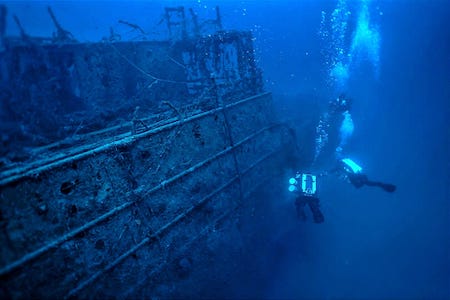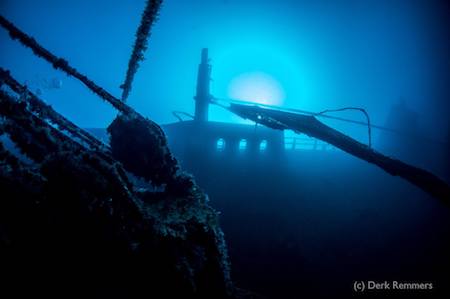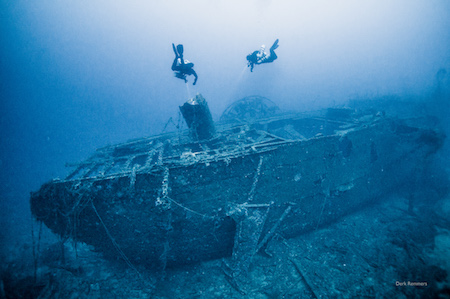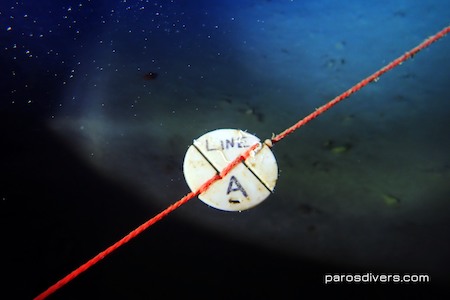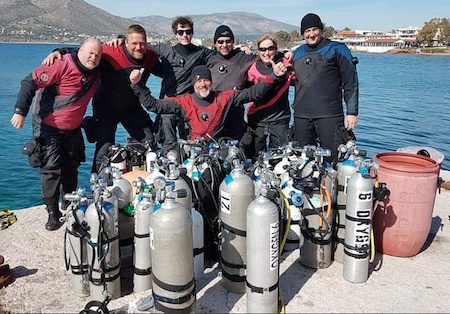-
For those with Hypoxic Trimix certification and considerable experience, we have some really special dives for you. On our Hypoxic Trimix Dive Trip, we'll be diving up to 75m, or up to 90m if you have the designated depth on your certification and serious experience. One good, long dive per day, our possible dives include: SS MONROSA - South of Arsida islet - An Italian steam cargo ship, she went down in 1941 having been struck by the British submarine HMS Triumph on her way to Piraeus. Accompanied by some defender ships, a short battle ensued, but the submarine managed to dive and get away. She is large and lies between 75-90m. SS PATRIS (not to be confused with PSS Patris) Patroklos Island. The carrier Patris , built in England in 1902, was travelling from Piraeus to Naxos in June 1927 and collided with the carrier Mosxanthi Togia sinking within 2 minutes. Eleven lives were lost. She lies at depths between 67 and 72m. SS ROSA VLASI – between Makronissos and Lavrio “Rosa Vlasi” loaded with a cargo of 2900 tones of mixed ferro-silicon, left Piraeus on 24 December 1959. About a mile and a half south of Sounio, she started to incline at an angle of 40-45 degrees. The Captain broadcast a Mayday and the crew prepared for the worst. Captain lost control of the helm and the ship overturned and sank. German U-boat U-133 – NW Saronic Gulf German submarine U-133 was a Type VIIC U-boat built for Nazi Germany's Kriegsmarine for service during World War II. She sank with all hands lost after striking a mine off Aegina island Greece on 14 March 1942.
-
AVANTIS III (one of our flagship dives) Dorousa Island, Aegina – She was built in 1977 as a cargo ship. On November 19th, 2004 en route from Messolonghi to Cyprus carrying construction materials and crew of 12, she hit the islet and sank with one casualty.
-
PSS PATRIS on SW Kea – a British-built paddle steamer sunk in 1868. The Patris was making for Syros Island but foundered on the reef in the dark. All four hundred passengers and crew were rescued. She now sits in two sections at 50m and 30m. She’s a sleeping beauty, covered with growth all along the rib-like structures.
-
New wreck and cave destination in Greece! We introduce an off the beaten track destination to include WW2 aircraft and a spectacular cave system in Paros island. Besides the beautiful location and the Aegean spirit Paros has to offer, there are a few diving gems hidden in the heart of the Aegean to include the Amphitrite cave, the Bristol Beaufighter, an WW2 British aircraft and the MS Marianna cargo ship. Local cuisine delights and the amazing landscape do not need an introduction. We will explore them too! Bristol Type 156 Beaufighter on SW Naxos – MS MARIANNA – Originally known as “Neils Maersk” and later renamed by Greek ship owners, the “Marianna” was a 91 meter cargo ship built in 1961 in Holland. The wreck sunk in 1981 whilst traveling from the Red Sea to the Port of Piraeus when it hit Amaras rocks between the islands of Naxos and Paros. The ship was transporting several thousand tons of barley, metals and pesticides. All the 24 crew were rescued safely and today The Marianna wreck rests at 24meters depth. Originally it measured 35m long, but when it hit Amaras the bow was sticking out above water, so in 1982 it was exploded and now the bow rests on the rocks while the remaining ¾ of the ship is 20 meters away laying upright in the sand. AMPHITRITE CAVE - The cave of Amphitrite is located on the SW side of Paros, amid a cluster of small islands. Amphitrite is the only known submarine cave in the Aegean sea and specifically in the Cyclades cluster. Its entrance is at -6m deep. Upon entering, there is a small cavern that reflects just a small fraction of the cave’s real beauty. Amphitrite has a very impressive decoration, with beautiful stalactite and stalagmite material enveloped in a delicate white sand veil. Amphitrite has 2 main lines. Line A is about 250m with a maximum depth of -24m and average depth at -17m. Line B about 150-180m and the maximum depth of -50m reaches. The cave has a steady temperature of 17-19 degrees Celsius all year round. In its depths, the diver will encounter a magnificent decoration, as the Amphitrite was a dry cave before 8.000-9.000 years ago. At -50m there are animal bone remains, probably from a turtle. Line A gives divers the opportunity of an easy swim, with a Nitrox bottom gas of 32% O2 that allows for at least a 45-50 minutes dive without deco.

